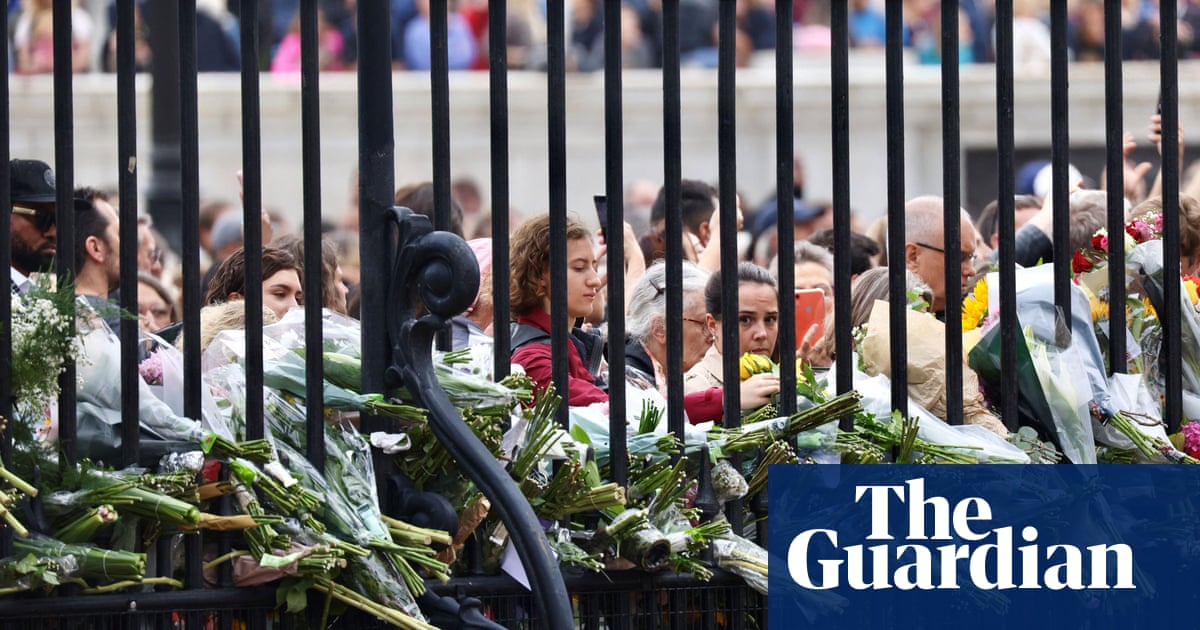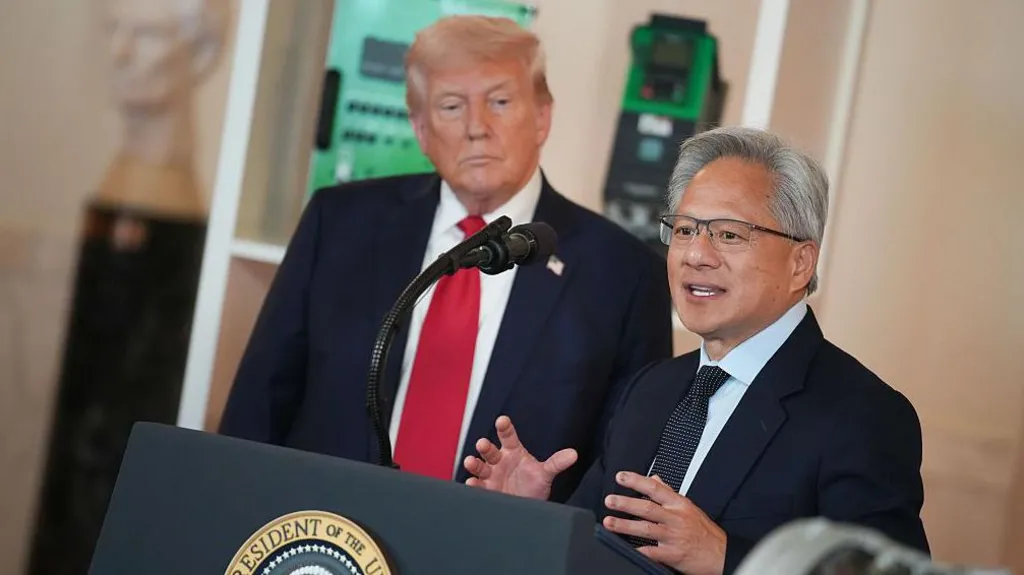Thousands make pilgrimage to palace to mourn the Queen and greet the King
The stream of people, bouquets in hand, hugged the palace tight. Slowly, dutifully, they skirted the perimeter wall of Buckingham Palace and its 39 acres of gardens in what seemed to be inexhaustible numbers, some among them perhaps feeling a little self-conscious and awkward, others proud of being part of the moment, happy to catch the eye of those around them.
From Birdcage Walk, at the south-east edge of the palace, clockwise the thousands went, flowing by the palace estate, around Hyde Park Corner and on to Constitution Hill, to emerge in an orderly fashion, guided by polite police officers in traditional helmets, so they might lay their floral tributes in front of the famous front gates or tie them to the black rails.
On completing their pilgrimage, the mourners joined a heaving crowd around the Victoria Memorial, refreshed by ever more people as the day went on, from every walk of life, of every age and ethnicity.
Among this cross-section of British society, a scattering of wide-eyed children. Hoisted high on to shoulders or pushed in buggies. Told that they were witnessing something they would remember for the rest of their lives, and that school could wait.
But what will they remember? It won’t be tears and overwhelming grief. There wasn’t much of that. This was not the death of Diana, Princess of Wales. Not a tragedy of that type. No hysteria or anger or anyone to blame. What then will pierce the consciousness of a young child about the end of the second Elizabethan era?
Soldiers in red guard the empty palace. Photograph: Future Publishing/Getty Images
It might be the sweet smell that filled the air, the roses, tulips, peonies and sweet peas, bouquets big and small. Neatly, tidily, some still in freshly cut plastic wrapping, spread out in front of the palace. Often with notes of appreciation. Expressions of thanks, of respect. “We are so grateful for your dedication and wonderful example,” read one. A soft and comforting aroma.
It might be the gentle murmur of the crowds, quite peculiar in a mass of people so large, or that when the heavens briefly opened, no one left. That those in front of the palace – where a teenage Princess Elizabeth had slipped into the crowds with her sister, Margaret, on VE Day 77 years ago – merely buttoned up their coats and opened up their umbrellas as one. An immediate canopy that disappeared almost as quickly as it had appeared. An astronaut above would have witnessed it as a slow-motion wink from the centre of London.
Mourners take shelter from the rain. Photograph: Anadolu Agency/Getty Images
Or might a young child at the palace on Friday remember in the years to come the peculiar sight of men and women lifting their phones into the air, like periscopes poking out from the ocean of people, trying to catch their very best image or video of the extraordinary scenes materialising? Or the red tunics of the soldiers guarding the empty palace? Many among the crowd said they were most moved, however irrationally, by the emptiness of the famous balcony.
The arrival of the new king at the palace in his royal Bentley might also make a mark on a young mind. Shortly before 2pm, King Charles III, fresh from Balmoral and the deathbed of his late mother, stepped out of the car with his wife, Camilla, the Queen Consort, to greet and shake the hands of some of those outside the palace for the first time as monarch. One woman gave the new king a peck on the cheek. Charles then took time to view the floral tributes, placing an arm around his wife, before walking on through the gates as a bugler sounded. The royal standard – raised only when the monarch is in residence – was flown for the first time to mark King Charles’s presence. “God save the King,” some shouted. But most kept quiet.
People try to get a glimpse of King Charles III. Photograph: Isabel Infantes/AFP/Getty Images
Respectful solemnity was the order of the day, as it was elsewhere in the UK as people reflected on the loss of a constant in their lives.
Gun salutes took place across the country, including in Hyde Park, at the Tower of London, Cardiff Castle, Edinburgh Castle, Hillsborough Castle, in York, Portsmouth and Gibraltar. A round was fired every 10 seconds, 96 to represent each year of the late monarch’s life.
There was a spontaneous round of applause from those gathering in Edinburgh. Jan White, 56, was one of hundreds of people who stopped to watch the gunfire salute on the busy Princes Street. “It was moving, it was touching,” she said.
Even at royal residences where no formal events were planned, the people came. In Windsor, Trevor Skerritt, 59, from Guildford, said he felt drawn to visit to pay his respects because of what he believed the Queen represented. “For most of us, she’s been the only monarch we have known,” Skerritt said. “She has given us solidity, she’s kept the royal family going through thick and thin.”
In Balmoral, two monks from the Theravada Buddhist centre in Aberdeen, dressed in orange-brown robes, took a bouquet of sunflowers to the gates. “After the second world war, the country was in a difficult time,” said one of them, Sujan, 45, originally from Nepal. “She was a figurehead, someone you can trust. You can’t trust politicians.”
In parliament, Liz Truss nevertheless sought to capture the moment, reflecting that for many, if not all, this was a time to take stock and to reflect. “On the death of [the Queen’s] father, King George VI, Winston Churchill said the news had stilled the clatter and traffic of 20th-century life in many lands,” the prime minister told the House of Commons. “Now, 70 years later, in the tumult of the 21st century, life has paused again.”











